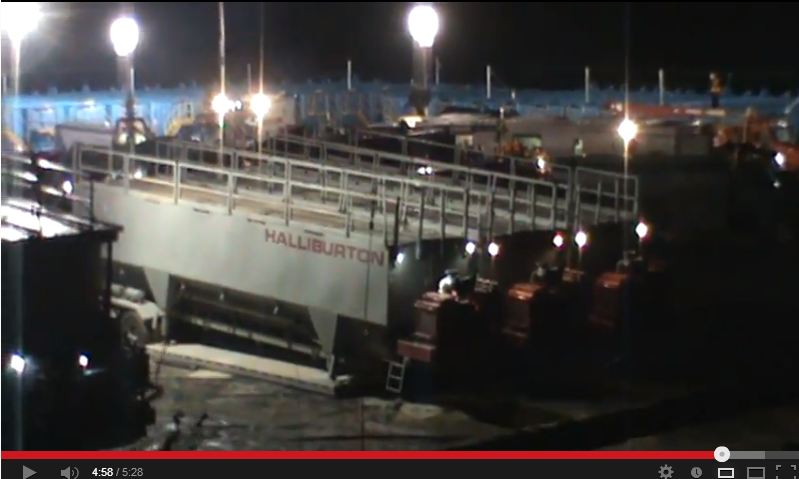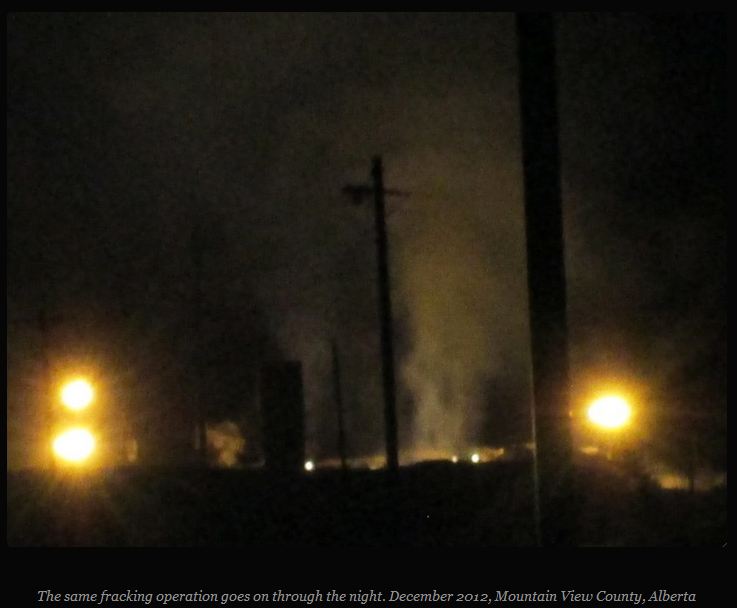Ewart: Frack sand an overlooked part of complicated process by Stephen Ewart, March 16, 2013, Calgary Herald
There’s an underappreciated grittiness to hydraulic fracturing. For all the public’s concern over fracking – from water to chemicals to wellbore integrity – there’s a vital component of the controversial oilfield practice that largely goes unnoticed. That would be the grains of sand used to prop open pathways deep underground to allow oil or natural gas to flow. Sand may be the most benign part of fracking, but that doesn’t mean it’s without controversy. With fracking, even the sand is no day at the beach. In places like Wisconsin and Minnesota there is a growing backlash against development of big, open-pit mines that supply the sand used in the fracking process that has revolutionized the development of tough-to-produce shale oil and gas reservoirs. Frack sand is a specialized product that is crush resistant and cylindrical, with uniform sized grains. It’s hardly a precious gemstone, yet there are limited mineable sand deposits in North America that meet the oil and gas industry’s rigid specifications. Similar to crude oil, frack sand has ratings standardized by the American Petroleum Institute.
The supply chain for frack sand is continental so trains loaded with sand – a rail car carries about 100 tonnes of sand – travel from as far as Texas to well sites in Western Canada. There are a number of sand mines in the western provinces, but the industry isn’t as developed as in the U.S. With security of supply critical in the fast-evolving sub-sector of the oil and gas industry, Canadian companies import train loads of sand. It may be economically viable but there’s a significant cross-border environmental footprint. There are also increasing volumes of what the industry terms “proppant” from China, India and other countries targeting the huge North American market.
The fracking process uses three main types of proppants – frack sand, resin coated sand and ceramics. Reservoir engineers determine which is appropriate for the geology in each formation. Sand makes up about 80 per cent of the market with the manufactured ceramics and resin-coated proppants each accounting for 10 per cent. Synthetic products are used on especially challenging reservoirs – typically they are deeper with extreme pressures and temperatures – but they are more expensive. Analysts report proppant can make up five per cent of the cost of a well. Ottawa White is the most sought after frack sand for its roundness and strength. It is named for Ottawa, Illinois – not Ontario – and most comes from Wisconsin or other northern states. Brady Brown, found in Texas, is the second most popular frack sand. Hodges Capital Management has reported the frack sand sector has had double-digit growth rates in conjunction with the proliferation of fracking in Canada and the U.S. over the past decade and could be a $1.9 billion-a-year industry by 2015.
The amount of sand pumped down to hundreds or thousands of metres below the surface varies with the number of frack stages – hence the term multi-stage fracking – used along the horizontal leg of a well. In a recent report, FirstEnergy Capital of Calgary said an average stage in the Montney shale gas formation in northeast B.C. will use about 100 to 200 tonnes of sand while a typical stage in the Cardium light oil play in Alberta will use only 20 to 30 tonnes of sand. There can be one or two dozen fracks – starting at the far end of the horizontal leg and working back to the vertical leg – to stimulate production on a single well. Fracks – which, unlike drilling, are only performed in daylight [later changed to: Fracks – which, unlike drilling, are generally restricted to daylight] – involve numerous truck-mounted pumps at the surface that push a slurry of water, proppant and small amounts of chemicals into a sealed portion of the underground well. When the down-hole pressure exceeds the breaking point of the rocks that surround the well bore they suddenly fracture. Billions of grains of sand are carried into newly formed cervices and keep microscopic pathways open for years as the well produces oil or gas. While common sand feels gritty, frack sand is typically smooth to the touch.
The process takes place far below ground but it is conducted by employees from companies in a trailer at surface crammed with computer screens and satellite equipment to relay the data back to offices in Calgary or Houston. There are dozens of trucks on site as the fracks occur, although they are generally on the lease site for only a few days, or a couple of weeks for extremely deep reservoirs. The use of fracking also means there are fewer wells on the landscape and reservoirs deliver more of the reserves than from traditional drilling alone. The payoff has the potential to be immense. There has been a renaissance in light tight oil production in Canada because of fracking. Natural Resources Canada reports there are more than 160,000 barrels a day from Alberta, Saskatchewan and Manitoba. It said Alberta’s tight light oil plays could add an additional 170,000 barrels a day by 2014. Of course, history has proven that nothing can be carved in stone as long as it – and that includes fracking – is built on sand. [Emphasis added]
[Refer also to:
Watch a night frac in Rocky View County, Alberta in FrackingCanada’s short film HOME at 4:10 Min:
A family had to live with fracking day and night in Saint-Grégoire de Bécancour, Quebec by lapresse.ca, November 24, 2010
Antero Marcellus Night Fracking Harrison County Indian Run by Mistabar, September 23, 2011″They are fracking all night tonight just because they want to watch the game tomorrow….”
Night Fracking at Kerr Well Site, Susquehanna County by Vera Scroggins, October 9, 2011
“You can’t be videotaping”
“Why can’t I videotape?”
“Well, It’s against the rules.”
“I am on the road.”
“Don’t matter.”
“Oh really, ya, since when?”
“Cause we’re having problems with media.”
…
“Don’t you want to be transparent? Don’t you want the world to know?”
December 15, 2011 Night Frac at Hollenbeck Gas Site by Vera Scroggins
Night Frac in Alberta, Mountain View County, Source: FrackingCanada



